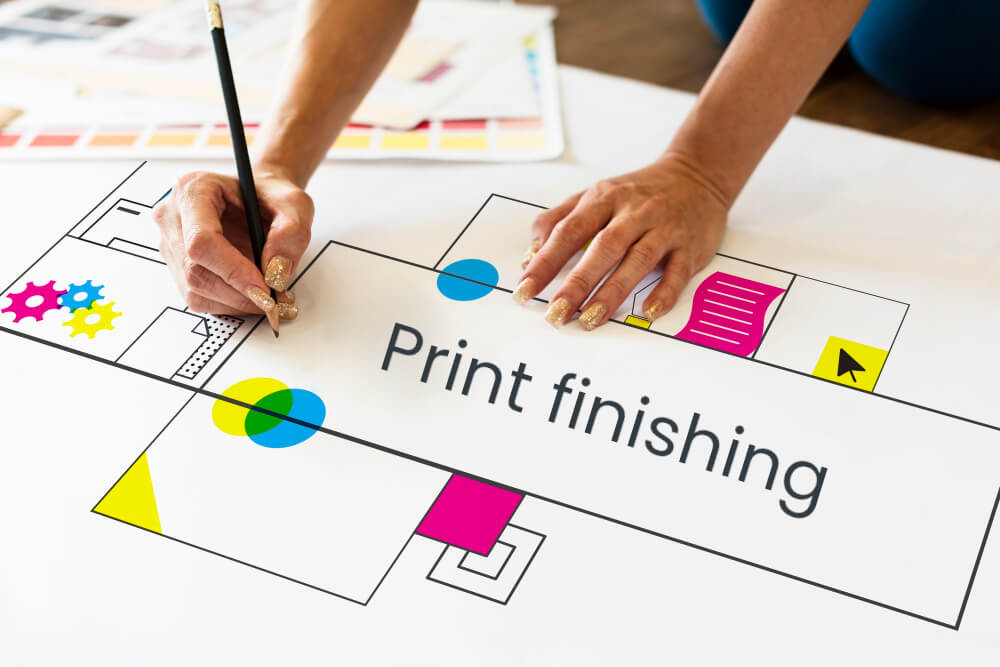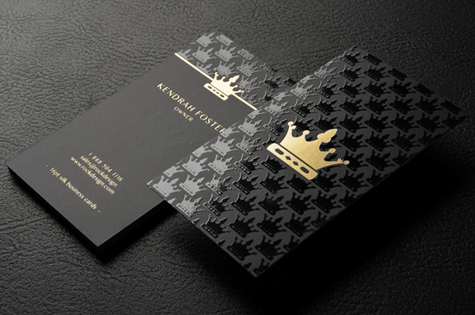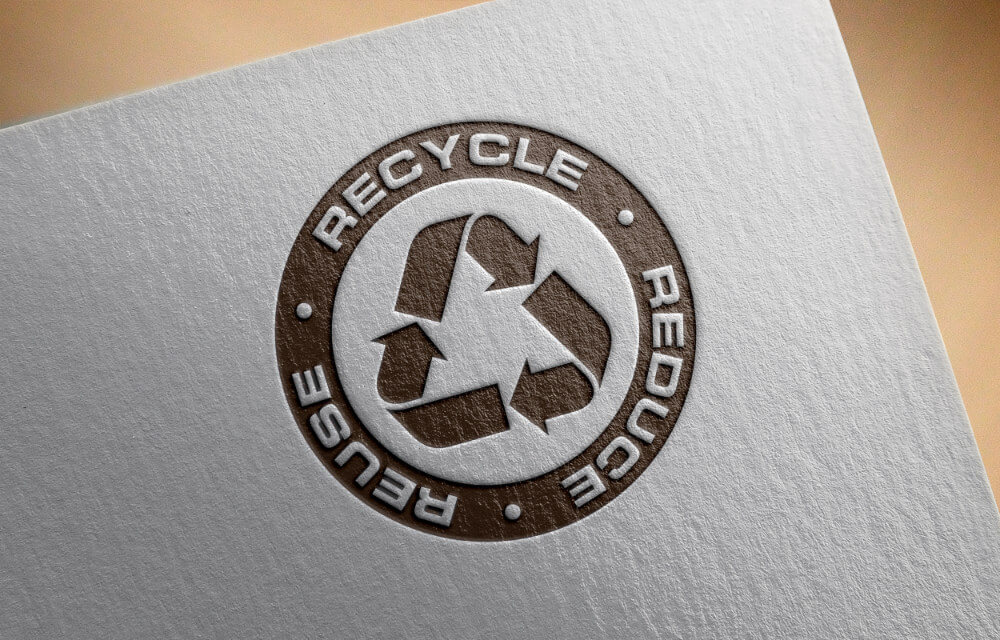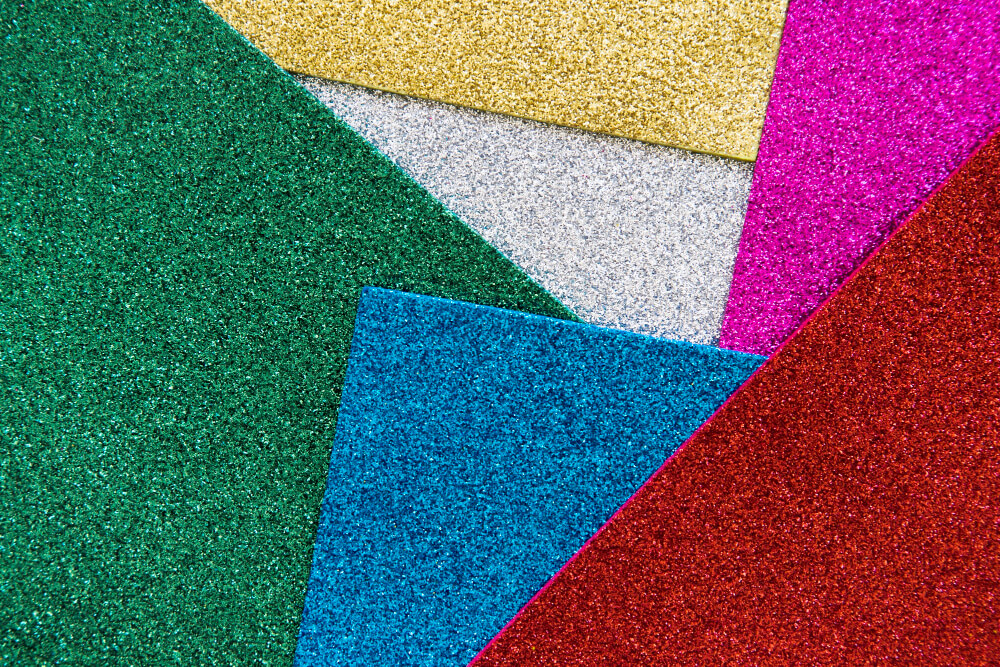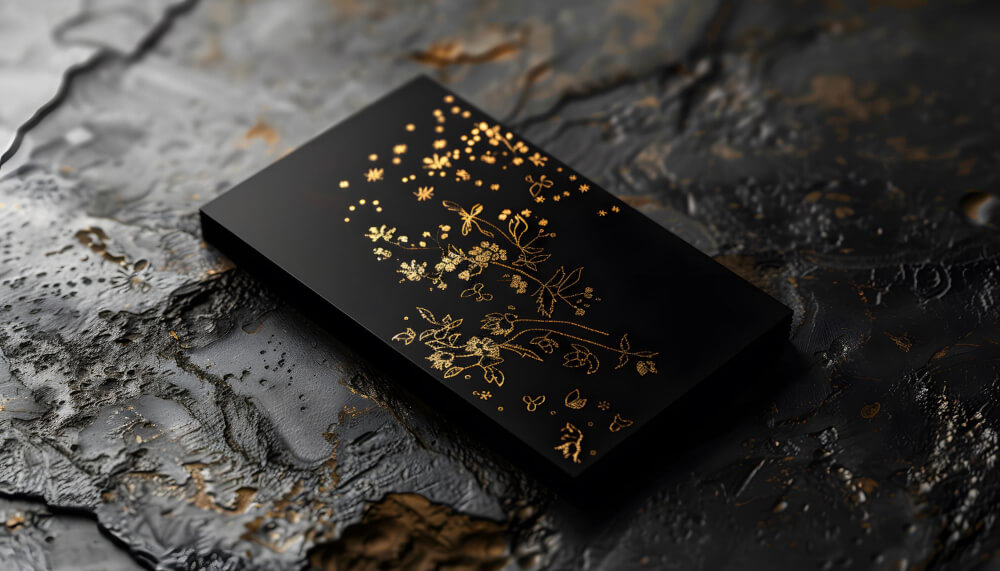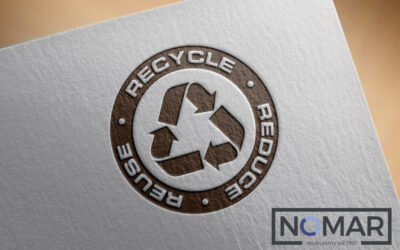Print finishing is one of the most important stages of the polygraphy process, which aims to give the final product the appropriate aesthetics, functionality and durability. Although the printing process itself is extremely important, it is the right finish that determines whether a given product will attract attention, fulfill its tasks and maintain its appearance for a long time.
Print finishing includes a wide range of techniques and methods that are used in the final stages of production of printed materials. These can be both simple procedures, such as cutting and folding, as well as more advanced techniques, such as varnishing, foiling, embossing, glittering or gilding. The choice of the appropriate methods depends on the type of product, its purpose and the customer’s expectations.
Basic Print Finishing Techniques
Cutting and Trimming
One of the simplest, yet most important processes in print finishing is cutting and trimming. Precise trimming of the print edges is crucial to achieving an aesthetic and professional look of the final product. Depending on the needs, cutting can include straight edges or more complex shapes that require the use of specialist tools such as dies.
Folding
Folding is the next step that is essential in the production of materials such as brochures, leaflets or books. In this process, printed sheets are precisely folded to obtain the intended form. Depending on the project, folding can be simple, such as folding in half, or more complex, with many folds, which is called creasing or folding.
Varnishing
Varnishing is a popular finishing technique that involves covering the surface of the print with a special varnish. The varnish can be matte, glossy or even UV, which gives the product an additional layer of protection and an aesthetic appearance. UV varnishing, due to its high durability, is often used on book and magazine covers, as well as for packaging.
Foiling
Foiling is a process in which a thin layer of foil is applied to the surface of the print. It can be glossy, matte, metallic or holographic foil, depending on the effect you want to achieve. Foiling not only improves the aesthetics of the product, but also increases its resistance to mechanical damage and moisture.
Embossing
Embossing is a technique that involves mechanically embossing patterns on the surface of the print. This process can be used to create inscriptions, logos or other graphic elements that stand out from the rest of the design. Embossing can be done in both convex and concave versions, depending on the intended effect. The embossing itself can be additionally decorated with gold or silver foils.
Glittering
Glittering printed materials is a process of adding glitter particles to the surface of prints, which gives them an effective appearance. Most often, glitter is applied using special glues or varnishes, which are sprinkled with glitter particles after application. After the glue dries, excess glitter is removed, leaving only those particles that adhered to the printed surface. Thanks to glitter, prints gain an elegant, luxurious character, and also attract attention with their intensity and shine.
Gilding
Gilding printed materials is a technique of applying a thin layer of gold or a material imitating gold to the surface of prints, which gives them a prestigious and elegant look. This process is widely used in printing exclusive invitations, certificates, business cards or packaging. A popular technique is digital gilding, which allows for precise application of a gold layer to a previously printed surface. Gilding adds not only aesthetic value to prints, but also increases their durability and resistance to external factors.
Gallery of print finishing techniques
Print Finishing as a Marketing Element
In today’s world of huge competition on the market, print finishing plays a key role in distinguishing printed products from others. Properly selected finishing techniques can make a product more attractive to the recipient, and thus more effectively attract the attention of potential customers.
One example here is product packaging. A unique finish, such as embossing or laminating, can make the packaging more luxurious and elegant, which in turn can affect the perception of the product itself as more valuable. In the case of advertising materials, such as catalogs or brochures, the right finish can make a potential customer decide to keep such material for longer, which increases the chances of using the company’s offer.
Modern Trends in Print Finishing
As technology develops, the printing industry is constantly changing, and print finishing is also evolving, adapting to new trends and market requirements. Currently, one of the most important trends is the pursuit of ecological solutions. More and more companies are focusing on materials and finishing techniques that are environmentally friendly, such as the use of ecological water-based varnishes, foil recycling or biodegradable materials.
Another important trend is personalization. Thanks to modern digital printing technologies, it is possible to adapt printed materials to the individual needs of the recipient. Personalized packaging, business cards or invitations that stand out thanks to unique finishing techniques are becoming increasingly popular.

Are you interested in working with us?
Go to the contact tab or
The importance of print finishing for publishers and companies
For publishers and companies that use printed advertising materials, print finishing is not only a way to improve the aesthetics, but also to increase the durability and functionality of products. Well-finished materials can last longer, which is especially important for promotional materials that are intended to reach the largest possible audience.
In addition, proper print finishing can influence the creation of a company’s image. Customers often assess the quality of an offer based on the first impression, and aesthetically and solidly made printed materials can play a key role in this context.
Summary
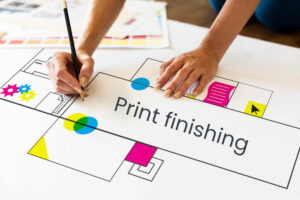
Print finishing is an integral part of the printing process, which significantly affects the final appearance and quality of printed materials. Thanks to various finishing techniques, such as varnishing, embossing or laminating, it is possible to create products that not only fulfill their function, but also attract attention and stand out on the market. In an era of growing competition, a modern approach to print finishing is becoming increasingly important, both for publishers and for companies from various industries.

